Posts tagged XPERIA X10

This Week In Android 8/8-8/14
Aug 15th
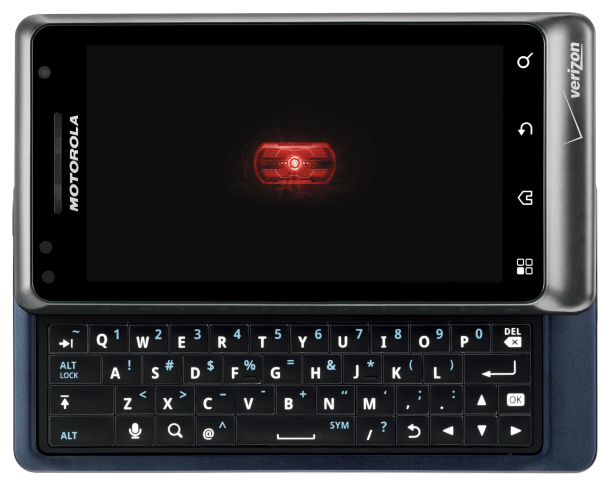 This week’s big Android news mostly revolved around the launch of the Motorola Droid 2 on Verizon, but that’s certainly not all that is going on in the world of Android. Google also announced their new voice commands feature for phones with Android 2.2 as well as officially launching the service Chrome to Phone. There’s a whole lot more to read up on after the break.
This week’s big Android news mostly revolved around the launch of the Motorola Droid 2 on Verizon, but that’s certainly not all that is going on in the world of Android. Google also announced their new voice commands feature for phones with Android 2.2 as well as officially launching the service Chrome to Phone. There’s a whole lot more to read up on after the break.
Motorola’s Sanjay Jha Says MOTOBLUR Will Not Stick Around
Verizon finally announces a release date for the Motorola Droid 2
Video: Sneak Peak of TweetDeck for Android
Telus updates Milestone, but isn’t 2.2 yet
So many decisions, so little time
Google pumps out updates to Gesture Search and Voice Search for Android
Motorola Droid 2 R2-D2 Edition Launching September 30th!
Nokia maintains handset market share lead, HTC cracks top ten
SE Xperia X10 Goes to AT&T Too Late, Too Bad
Aug 9th
Seriously? You haven’t even updated the device to Android 2.1 yet? This is a travesty.
Sony Ericsson announced today they are to release the Xperia X10 this week on AT&T’s network, the only network in the US in need of some great Android devices. Too bad this isn’t one of them, at least not in its current form.
We’ve had the phone in Canada since April, and I have to say, while the hardware is sexy as hell, its implementation of Android 1.6 is half-baked, buggy and slow. Almost unusably slow, especially for the hardware it’s running on.
On the surface, the device is a dream. 1GHZ Snapdragon, 512MB RAM, 8MP camera, beautiful sleek exterior, 4″ 800×480 screen. Really, really nice.
But the on-screen keyboard is terrible. The Mediascape and Timescape apps are awful, and cannot be deleted from the device. And the fact that it’s running a version of Android that has been available for more than a year is inexcusable, especially when most other devices have been updated to 2.2. SE is only claiming that the X10 will be updated to 2.1 in Q4 of this year, which could be December 31st.
So, in my opinion, avoid this puppy. AT&T customers have a much better phone in the Samsung Captivate already.
Price Drops Coming For Rogers Android Handsets
Jul 12th
Rogers is usually pretty competitively priced with their phones. They can have such large subsidies because in Canada, with three-year contracts, they are guaranteed a certain amount of revenue per customer. And Rogers’ monthly charges, especially for a smartphone, are not cheap.
So a few handsets are coming down in price, and while none are earth-shattering, they bring the devices down to a certain level where, when the iPhone 4 arrives, they will still be attractively and competitively priced.
![]() Firstly, the Sony Ericsson Xperia X10 is coming down in price from $149.99 to $99.99. This is a very nice Android handset that has just received a nice little upgrade to improve performance and battery life, though in reality if it’s not Android 2.1 no one really wants it.
Firstly, the Sony Ericsson Xperia X10 is coming down in price from $149.99 to $99.99. This is a very nice Android handset that has just received a nice little upgrade to improve performance and battery life, though in reality if it’s not Android 2.1 no one really wants it.
The Motorola QUENCH and Acer Liquid e are both coming down from $49.99 to $29.99. These are capable phones, but I would take the Acer over the QUENCH, since the specs are much better and the screen is gorgeous, and it currently runs Android 2.1 while the QUENCH runs Android 1.5 on top of Motorola’s MOTOBLUR skin, which is great for quick messaging and terrible for everything else.
The long-in-the-tooth Samsung Galaxy Spica is coming down from $29.99 to $9.99. This is also a nice phone, great specs and is very hardy, but is still running Android 1.5! So the faster this phone gets off the market, the better for Android fragmentation.
![]() And lastly, the brand-newly launched Samsung Wave is already receiving a price cut, from $99.99 to $79.99. This phone runs on Samsung’s own bada OS, and has not really been proven to give any advantage over existing platforms. Read my editorial on why the Wave will likely flop in Canada (and elsewhere).
And lastly, the brand-newly launched Samsung Wave is already receiving a price cut, from $99.99 to $79.99. This phone runs on Samsung’s own bada OS, and has not really been proven to give any advantage over existing platforms. Read my editorial on why the Wave will likely flop in Canada (and elsewhere).
Remember, all these prices are for new customers who sign a three-year contract. So take that into account when buying a phone you are likely going to spend a lot of time with over the next three years.
Rooting Party in Android’s House - Aria, X10 Rooted, Nexus One Re-Rooted
Jun 23rd
It’s the ultimate #win for Android users when their beloved device finally gains root access. Some are easy (Nexus One), others not so much (EVO 4G). But, eventually, they all fall.
Since the EVO and Incredible were rooted, there has been a flurry of activity on XDA-Developers, and the above phones have been added to the list. Most notably is the Sony Ericsson Xperia X10, which has a buggy, finicky and slow build of Android 1.6 inside a piece of beautiful hardware. Seriously, the hardware of the X10 is my favourite phone design outside the new iPhone 4, and that’s saying a lot (sorry Legend, you’re just too puny to make the cut).
No details have been released yet regarding the X10, but there is a picture which proves the hack exists (see above).
The other nice piece of news is that the diminutive AT&T device, the HTC Aria, has also been rooted, giving users clamoring for outside app installation access the ability to do so, among other nefarious things. Check it out at XDA-Developers.
The Nexus One has had root access since before it was on the market. That is because the bootloader can be unlocked via a mere one-line code. However, unlocking the bootloader also locks your warranty (see what I did there?). But the same ingenious method used to root the EVO 4G has now been employed for the Nexus One, and though it takes a bit of practice and patience, it should work just fine eventually. Keep your eyes glued to this thread for more information.
Sony Ericsson Xperia X10 Video Review: Much Of The Same, A Little Bit Worse
May 8th
Update: Here is a video overview we put together to go with the review. Sorry for the bad perspective!
There was a lot of anticipation in the run-up to the release of the Sony Ericsson Xperia X10. It was SE’s first Android handset. On paper, its specs were amazing (and still are): 4-inch 854x480px screen, 1GHZ Snapdragon processor, 512MB RAM, 8MP camera with light. Its custom skin was not to be as overpowering as HTC’s Sense UI or Motorola’s MOTOBLUR. Its Timescape and Mediascape applications were just overlays on top of the standard Android 1.6 OS. Timescape was supposed to give you a beautiful 3D layout of all your social media platforms. Mediascape was supposed to be your music- and video-viewing one-stop-shop.
Supposed to, supposed to.
So much potential. Where did it go wrong?
Well, nowhere, exactly. The phone performs largely as it sets out to: as a high-end Android device. But somewhere along the line, Sony Ericsson made mistakes. They released buggy software on a relatively stable OS, resulting in hit-and-miss performance.
Software
Let’s start with the most glaring example of where they went wrong: the software keyboard. To the naked eye, the Xperia keyboard looks relatively similar to the stock Android keyboard. Most of the keys are in the same place, and it has the nice auto-correct system that you are used to if you’ve used other Android devices. But this keyboard is stupid. It does not correct intelligently. In fact, the word it suggests to you is usually the wrong word, but your correct word is often sitting to the left or right of the one that, if you let go of the space bar, it will automatically change the word to. It is infuriating.
To top it off, to say the keyboard is inconsistent would be a misnomer. It is not merely inaccurate and difficult to use; it is diabolical. Letters seem to appear out of nowhere, and selections seem random, even meant to throw you off. I do not suggest using the stock Xperia keyboard. I suggest going to XDA-Developers and downloading a modified version of the HTC Sense keyboard. It is by far the best virtual keyboard available to date. Give it a try.
Luckily in Android, unlike on the iPhone OS, it is easy to change your keyboard. You merely have to download a new keyboard, install it, and go to the Settings -> Language/Keyboard menu to enable to one you just downloaded. Next, in a text box on any screen, hold down your finger until the popup with “Input Method” emerges. Merely select your keyboard from the radio list and voila. You’re done!
Hardware
Now, to go back to the Xperia X10. There is something wrong with the screen. It is gorgeous. By far and away the most vivid, accurate, high-resolution screen I’ve seen on a mobile device. It is better even than the Droid screen, which is the same resolution. Colours pop motion is fluid, and you would have to struggle to see individual pixels. In short, it is what makes the phone worth using. But there is only one problem. The screen is muddy; it often doesn’t register finger inputs. Using the same keyboard on the X10 and the Nexus One, I found I had to press down almost twice as hard on the former device to get the same key to register. Sometimes my finger would press one key and it would select another one entirely.
When you’re dealing with a device that does not have a dedicated hardware keyboard, to have an inaccurate screen is a death knell.
Design-wise the device is great. It’s sleek and well-proportioned. It does not feel too heavy, and the curved back gives it an elite feel that would go over well with any iPhone 3GS or BlackBerry 9700 user. The front of the device is taken up almost exclusively by the screen, which, again, is freaking stunning. Below the screen are three hardware buttons: Select, Home, Back. These are in unusual places compared to other Android devices, where the back button is usually on the left of the screen. Takes some getting used to. On the left side is nothing but a microphone, and on the right are the volume rocker and below that the dedicated camera key, which often comes in handy.
The top of the device houses the power button and an infuriating cover for the Micro-USB port. I hate devices with these covers, though I realize they are more aesthetically pleasing, and safer, than a gaping hole somewhere on your device. That being said, KILL THE PORT COVERS. They are way more hassle than they’re worth.
The back of the device is one of the nicest in recent memory. It is completely smooth but for the small camera lens and flash, and a very sexy Sony Ericsson logo.
The camera on the device is excellent. At 8.1MP, it had better be. The pictures are quick to take and re-take, and I think it’s one of the better phone cameras on the market. That being said, there is one major issue: the flash is not really a flash, but a camera light. That means that, for the entire time you are in the photo app, the camera light is on. To turn it off is a cumbersome set of steps that involves opening the advanced settings menu in the camera app and turning off the camera light. I wish they the company had thought it through and realized it would be much more battery-friendly if the phone had a light sensor to detect whether the flash should be on or off. The Nexus One does this extremely well, and it is something you shouldn’t have to think about. It should just work.
Android Implementation
As an Android phone, there really isn’t much to say. It has a nice blue-tinged theme that pervades the standard menus, and because it is on Android 1.6, most current apps do run on the device. SE has come out and said that, even if the phone is upgraded to 2.1 in the fall, it will not have multitouch enabled on the device; it is hardware, not software, limited. This is extremely disappointing, and goes to show how little forethought the company made into the design of the device. Did they not think that, down the road, consumers would be used to having multitouch on their iPhones and Droids and Nexus Ones and expect this from a high-end device such as the Xperia X10? Perhaps in trying to keep costs down they chose to go with a higher-quality LCD screen without multitouch rather than skimping on the screen quality. Who knows? Either way, though, the Droid/Milestone is proof that you can have your high-res cake and eat its multitouch too.
Android 1.6, besides the lack of multitouch, does have some other limitations. Certain apps will not run on the device due to the lack of APIs available to the OS from Google. Features like Voice-to-Text, Live Wallpapers, enhanced media capabilities. Overall, though, your experience with Android 1.6 won’t be too dissimilar to that of Android 2.0 or 2.1, which is the latest version available. Most of the upgrades in 2.1 are speed-related, and that is obvious when using the Xperia X10 next to the Nexus One.
Despite the fact that the devices use the same processor and same amount of RAM, the Nexus One screams, whereas the X10 just flies. There is obvious stuttering and slowdown in many apps that don’t the N1 is not bothered by. That isn’t to say the X10 is slow. It isn’t. It just doesn’t live up to its potential.
Another glaring omission on the X10, though its omission shouldn’t be missed, is that of a directional pad or trackpad. All HTC Android devices come with one, and the Droid has its famous four-way directional pad. Why is this important, though so seldom used? Because unlike the iPhone OS, Android’s text selection implementation is non-existent. If you type something and need to go back and edit what you wrote, you may have to jab your finger in the general direction of the text before you land on it, only to graze your finger over the screen and lose your place again. It’s frustrating, to say the least. Though it was likely a design decision not to include it, the X10 loses productivity points for that alone.
X10-Specific Features
Another feature exclusive to the X10 are Timescape and Mediascape, either in widget formats or as apps themselves. Timescape consolidates your media updates, such as Twitter, Facebook, SMS, Email, into a series of 3D cards you can scroll through. Clicking on one will take you into another app, so its usefulness is severely minimized. And once you have hundreds or thousands of updates in the program, it slows to a crawl. It’s more a technology demo than a usable piece of software; you will garner some oohs and ahhs from friends admiring the beautiful 3D effects, but beyond that, I’d leave it alone.
Mediascape is more usable, though nothing extraordinary. It consolidates your music, movies and photos into a single app with an attractive UI. Nothing more.
Battery Life
To add further insult to injury is battery life. The phone barely gets more than 6 hours of minimal use from a full charge, and less than 3 with heavy use. My tests involved keeping WiFi, GPS and Bluetooth off, and using it as I would throughout the day. Unfortunately, though, I noticed that the battery just dropped like a stone, losing 10-15% an hour.
Phone use was even worse: I came off a 20-minute phone call to find the battery had dropped by nearly half. This is unacceptable, and hopefully something SE can fix when they release their Android 2.1 system update in Q4.
Conclusion
See the movie below (it’s coming), as I’ve exhausted my time and space writing this eulogy to a great phone turned bad. I won’t be surprised if this is one of Rogers’ best-selling devices, as to the non-critical eye looking for an attractive smartphone with tons of features that’s cheaper than an iPhone and has some buzzwords its competitor doesn’t (multitasking! high-res screen! multitasking!!) it’s hard to beat.
I’d recommend holding off on the phone until either a software update fixes some of the bugs, or for the next generation, which SE is no doubt working on as we speak.
For the tech geek: 6/10
For everyone else: 8/10
Rogers Offering Xperia X10 For $99.99 To Select Clients
Apr 21st
 Rogers has extended their President’s Thank You Letter offer to select clients. If you are lucky enough to have a good standing with the company, and receive one of these letters in the mail, you will be eligible to go into any Rogers Wireless store and pay $50 less than the regular population for a brand-new Xperia X10 on a three-year contract.
Rogers has extended their President’s Thank You Letter offer to select clients. If you are lucky enough to have a good standing with the company, and receive one of these letters in the mail, you will be eligible to go into any Rogers Wireless store and pay $50 less than the regular population for a brand-new Xperia X10 on a three-year contract.
Depending on your HUP eligibility, the offer is available to customers who extend their contract for three years with the company, though it’s entirely dependent on your current contract allowance.
This offer is available until June 30th, so don’t miss out, and check that mail!
(Thanks to our tipster for the heads-up)
Xperia X10 Mini and Mini Pro A Reality For Rogers?
Apr 14th
According to a tipster, two new versions of the Xperia X10 series, the Xperia X10 Mini and Mini Pro, will be hitting Rogers sometime in the summer. They have lower specs than their big brother, and the Pro version has a slide-out QWERTY keyboard, but at their cores, they are Android phones running the same OS as the original.
Both devices have a low resolution screen of 240×320 (QVGA) which may not translate so well to the Android interface, but we will have to wait and see. One of my favourite features of the X10 is its beautiful high-res screen, but these devices may be marketed to a younger crowd, and will likely cost much less than the $150 the X10 currently goes for.
Check out the phones at Sony Ericsson.
via (MobileSyrup)
Full Rogers Price Plans for Sony Ericsson Xperia X10 Revealed
Apr 9th
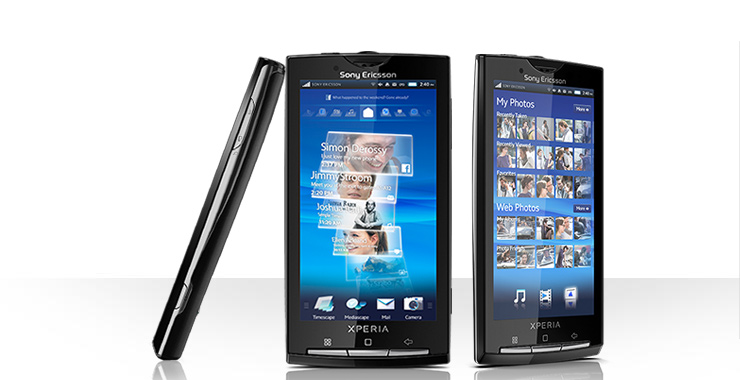 We have been following the news on Sony Ericson’s hot, new Android 1.6-powered handset for quite a while now and with Rogers announcing preorders recently we can definitely feel the impending launch. We had already learned that the Xperia X10 would be available on Rogers for $149.99 with a 3-year contract and off-contract it would ring in at a whopping $549.99.
We have been following the news on Sony Ericson’s hot, new Android 1.6-powered handset for quite a while now and with Rogers announcing preorders recently we can definitely feel the impending launch. We had already learned that the Xperia X10 would be available on Rogers for $149.99 with a 3-year contract and off-contract it would ring in at a whopping $549.99.
Mobile Syrup has gotten their hands on a new spec sheet that breaks down the full pricing plan. As expected trying to do this deal without signing your life over to Rogers for three years doesn’t make things cheap. Buying the Xperia X10 with a 2-year contract will set you back $449.99 wile the MTM/1-year contract is going to be just $50 dollars more at $499.99. Even if you can get over this initial buy-in price you still have a $45 minimum voice and data plan to cough up for.
The good news is that Rogers will be bundling a 16GB microSD card in with the phone so you won’t have to worry about plunking down even more cash just to get all your music on the device. Though the Xperia X10 will be running Android 1.6 at launch, it has been promised that it will see an update (likely to 2.1) in the future, though no specific date is given. Hit the ‘more’ button for the full spec sheet.
Sony Ericsson Xperia X10 On Deck At Rogers Wireless
Mar 22nd

We all knew it was coming, but the Release of Sony Ericsson’s first Android phone, the Xperia X10, seems imminent on Rogers Wireless. They have just put up a landing page, detailing the specs and features, without giving a peep about the price.
The Android 1.6 phone comes with a 4-inch screen, an astounding 8.1 megapixel camera, and Sony Ericsson’s custom Android skin called Timescape, which offers a 3D view via flipcards, of all your contacts and social media interests.
Engadget has already reviewed the unit, and gave it a mixed review, considering its on-screen keyboard is nearly unusable.
Look for more info on the device in the coming days.

Who wants a digital camera that makes phone calls?
Feb 10th

I love technology as much as the next guy. Even seemingly useless technology catches my eye; I want to be able to control my PS3 from my laptop, my car from my phone, my lights and speakers from my iPod Touch. But still, sometimes I see technological “advances” that I just don’t understand.
Sony, makers of all things fancy, quality and expensive, has gone all out with their new XPERIA X10 phone. It has all the features of a high-end smart phone: huge touchscreen, Wifi, the Android OS and an absolutely absurd 8.1MP camera with up to 16X zoom. Yes, a phone with a camera better than many people’s stand-alone digital camera. While I don’t see why someone would need an 8.1MP, 16X zoom camera on a phone, that’s not even the technology I don’t get.
The XPERIA X10 has the coolest, less-practically-useful feature I’ve seen in a while: facial recognition software. Apparently, with this phone, when you take a picture of someone whom you’ve photographed in the past, the camera picks up on the face and gives you immediate access to all the other pictures of that person you’ve taken in the past. It also groups them together in the media folder. This sounds like a great idea and, according to the video I saw of it working, seems to function just as described.
Still, I can’t imagine a scenario where this would we necessary. If you take enough pictures to want an 8.1MP camera on your phone, why wouldn’t you just buy a decent digital camera? I take a decent number of pics from my phone, but simply using folders seems like enough organization for me.
Add that to the reported $850+ price tag (I’m sure it’s less with a contract) and I see this as another awesome Sony product that doesn’t quite fit anyone’s needs.
More about the phone here and watch the short video of this feature over here.
Follow me on twitter
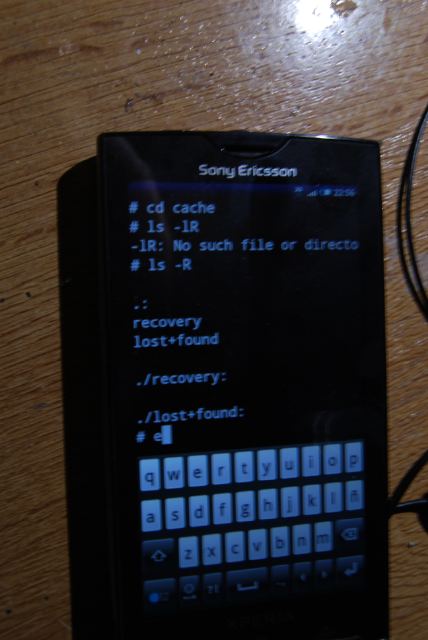

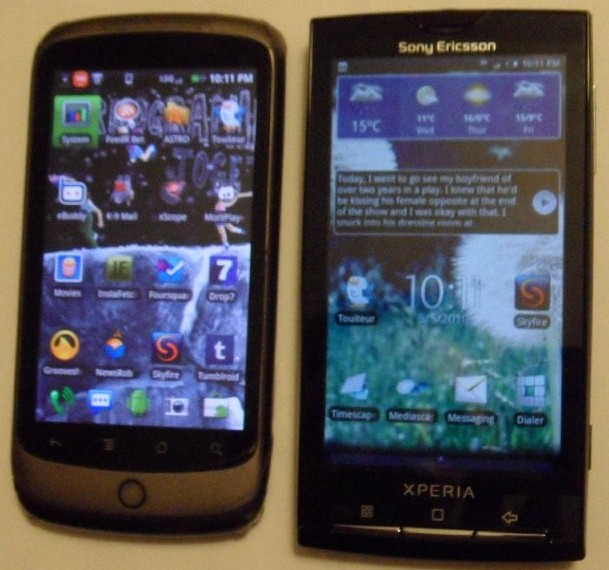
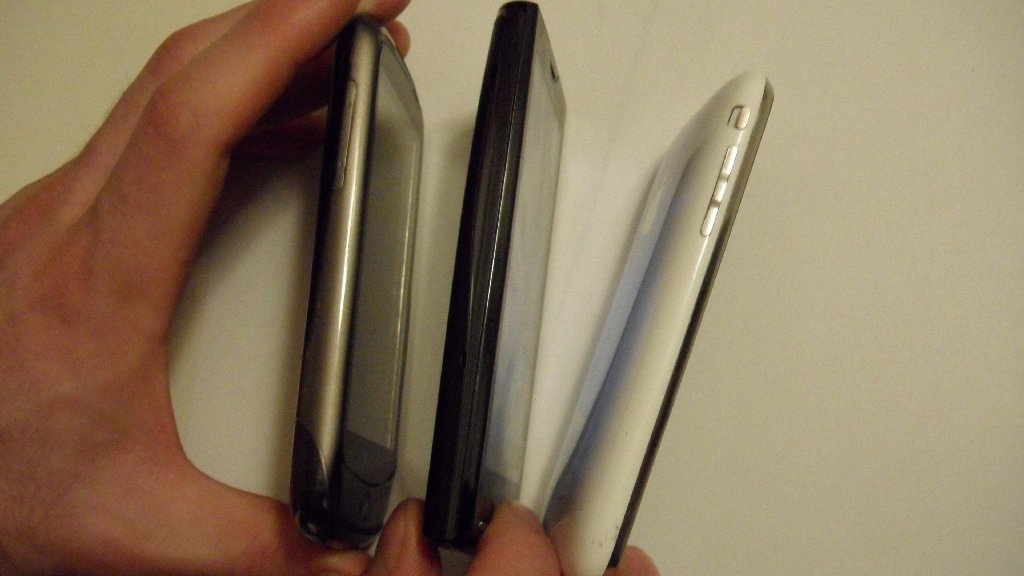







Interact With Us